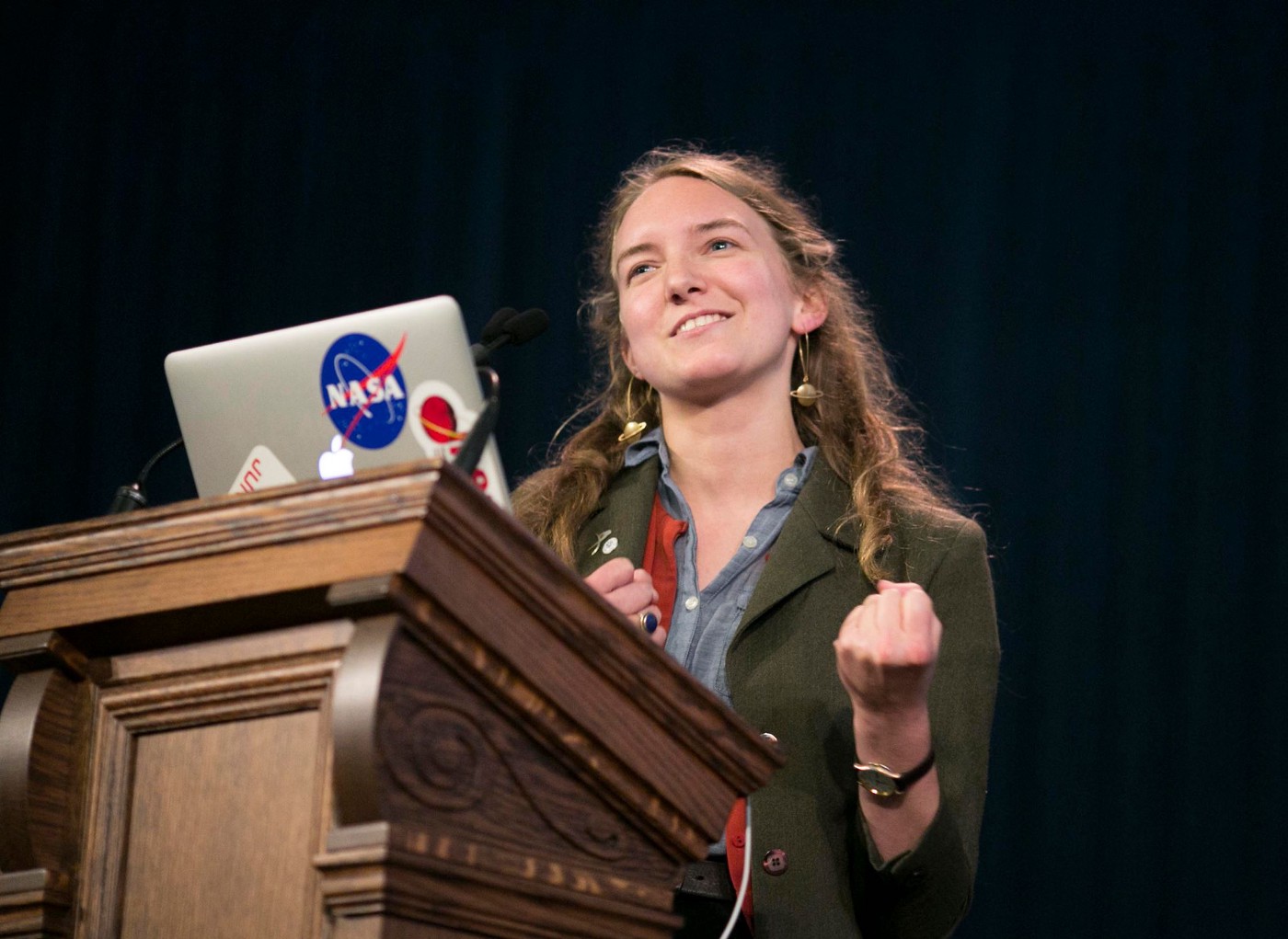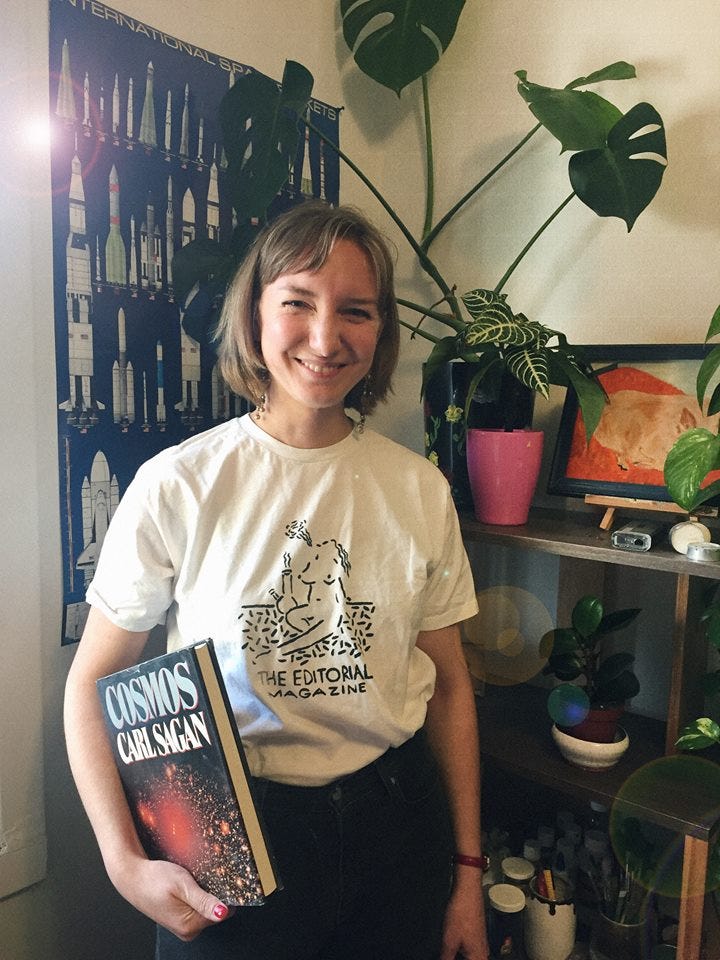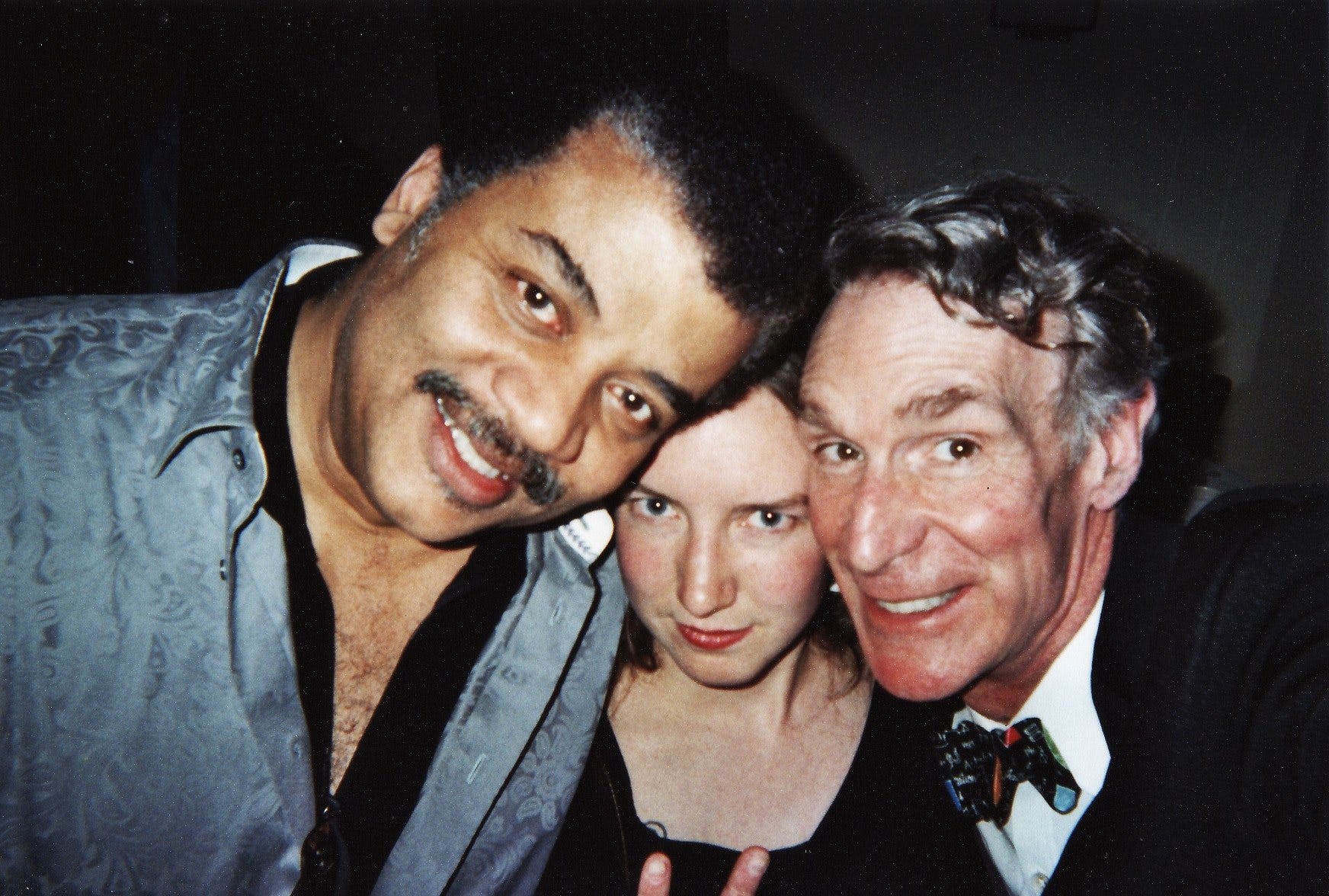Space with coffee: Kate Howells on her passion for science
Back to Posts

Every coffee table book has its eye-catching element and for Space is Cool as Fuck, its uniqueness is right in the title.
The book is self-described as “not your mother’s coffee table book”. The publishers at Lost the Plot were the ones to suggest the idea of matching the co-author, Kate Howells’, personality and conversational tone.
Kate admitted that she uses the occasional emphatic swearword in daily conversation. Coupled with her deep interest in space and science in general, choosing a cheeky tone felt like the right fit.
But it also created a way to make science more accessible and casual.
“We wanted to sort of trick people into learning as it were,” said Kate.
“Draw them in with cursing and keep them there with jokes and more tongue-in-cheek bad language, but also get across some ideas that we wanted people to know.”
Kate and her publisher’s target for the book was to get millennials interested in space. The idea was to create a book that makes science fun.
“Really, what we were aiming for is not to be preaching to the choir, but to be attracting people who wouldn’t normally check out a book about space,” said Kate.
Journey to Space
Kate originally made her own entrance to space during her Bachelor of Arts. She was in a used bookstore and picked up Carls Sagan’s Cosmos on a whim and was taken by his communication style.

She was hooked in by how Sagan portrayed the complexities of space while still making it poetic.
“I think he was really special in that he knew how to communicate what was amazing and beautiful about nature and reality and science as a tool to explore,” said Kate.
“I think you really need to be ushered into the topic and I think Carl Sagan does an amazing job of that just through the sort of the beauty that he conveys through his writing.”
After reading Cosmos, Kate dove into science through McGill’s earth and planetary sciences department. She’s maintained her fascination with science into her career and melded it with her arts background to form her own communication and storytelling style.
Producing the Book
Creating and publishing a book is a big undertaking and was a learning experience for Kate. Her publishers gave her artistic freedom to choose what she wanted to write about and how.
She’d already had experience talking about her space expertise with friends. After talking about the topic so much, she found how to write about the topic in a way that felt natural to her.
“Honestly I sort of just winged it,” said Kate. “I did have friends and family read over drafts of what I’d written, if there was anything I wasn’t sure about, to kind of give me a sense of ‘am I getting too in the weeds, or am I not being specific enough’.”
Kate wanted to keep the book interesting and casual, while also balancing it with hard facts and data. She already knew the majority of the information in the book to know how to highlight what she felt was cool about space.
She also brought her friends and, then, boyfriend into the process by including them as guest writers. She even got an interview with Bill Nye on topics from climate change, to the universe.

All three guest writers wrote about what they were curious about, with Kate to help edits their draft.
“It was really nice to be able to give people that I knew and loved a platform to express themselves,” she said.
“I think it’s a great example, and I really did try to emphasize this, that if you’re interested in something, you can explore it, you don’t have to be an expert, and I think it’s cool to see how someone from an outside perspective interprets a topic.”
Branching out in Science
Kate has hopes to write another book that also branches out into other science topics, such as oceans, or even quantum and theoretical physics.
One change she would make would be in who she chooses to include as guest writers to include more women. The name that came to mind for Kate was Julie Payette.
“She’s very casual, very natural, very calm and confident and I think that she is a great role model [to show] that you don’t have to be a certain type of person to be an astronaut, or to be a woman in science, or a person in science,” said Kate.
“She does a great job of sort of just coming across as a very relatable, normal person and I’ve always admired her for that.”
Kate mentioned that she’s found there are a lot of opportunities for women in science to get involved in the field. She felt fortunate to have initiatives that allowed her to meet and learn from people within the field.
Such initiatives are created to inspire interest in science and make it more accessible, similar to what Kate wanted to accomplish with Space is Cool as Fuck.
“I think the number one thing that I’m trying to do in this book and in other parts of my work is to convey the idea that science isn’t as scary as a lot of people think it is,” said Kate.
“It’s not as hard or inaccessible as people think it is. The wonders of existence are accessible for anybody to learn about and that once you start getting curious and pursuing that curiosity, you’re going to find a lot of enjoyment from it.”
